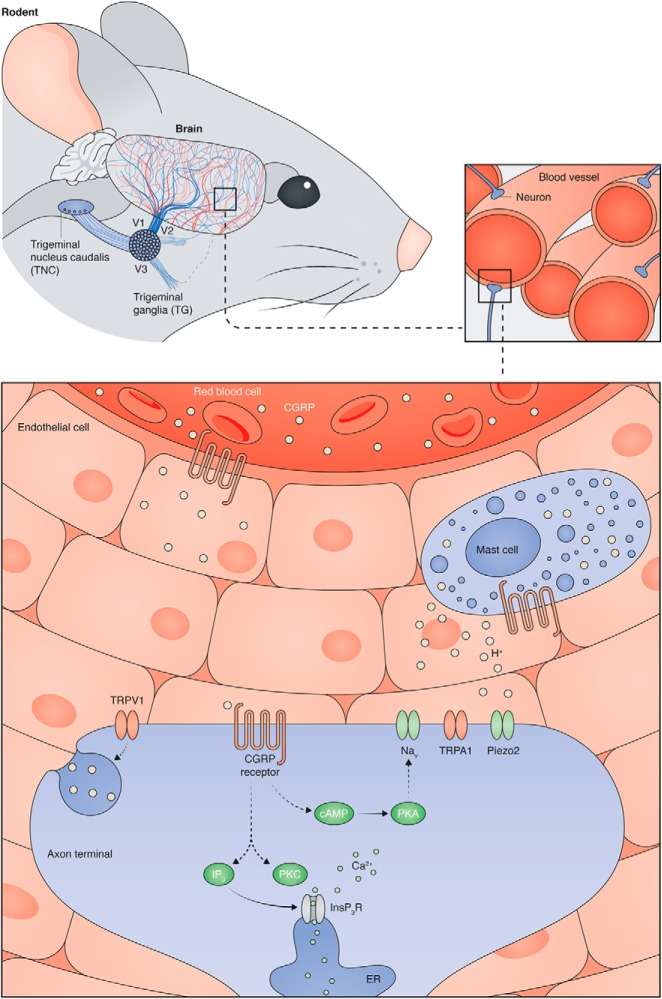Figure 1.
Potential mechanisms through which CGRP might modulate dural afferent activity. The rodent dura is a highly vascularized and innervated tissue. Many dural afferents, the cell bodies of which are located in the trigeminal ganglia, terminate in close proximity to blood vessel endothelial cells. Circulating CGRP and CGRP released from mast cells activates CGRP receptors. In neurons, CGRP receptor activity leads to (1) adenylyl cyclase activation, subsequent increases in cAMP, and protein kinase A-induced sensitization of plasma membrane channels (e.g., voltage-gated sodium channels (Nav)) or (2) phospholipase-C-mediated synthesis of IP3 and DAG, subsequent activation of protein kinase C and release of intracellular calcium stores. Collectively, these activities can increase neuronal excitability. Specific activation of TRPV1-expressing dural afferents can lead to peripheral release of CGRP, which can perpetuate CGRP signaling in nearby neurons and non-neuronal cells.

